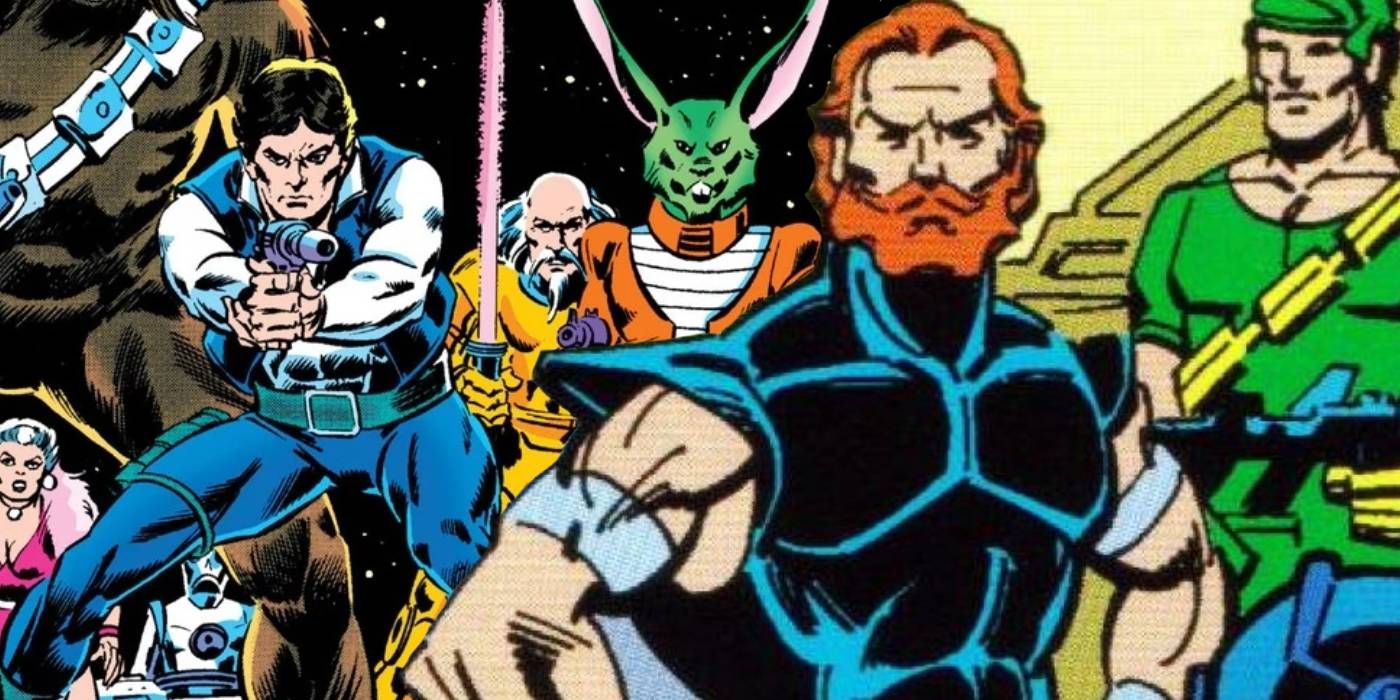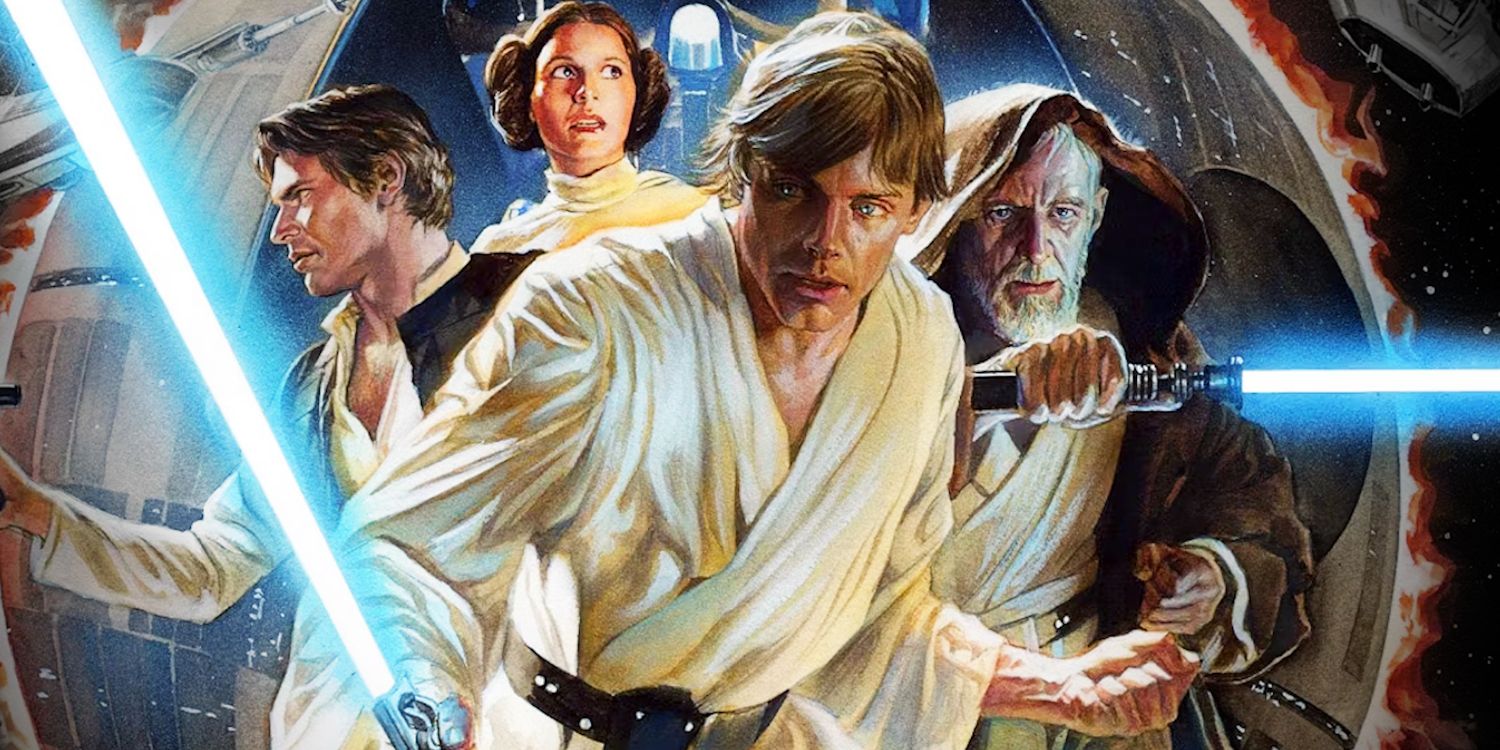Summary
- Marvel is honoring its publication history in various titles, including
Immortal Thor
and
Beware the Planet of the Apes
, by incorporating elements from old comics into contemporary stories. -
Immortal Thor
reimagines a classic 1970s
Thor
story, with major repercussions for the God of Thunder’s lore, while
Beware the Planet of the Apes
integrates panels directly from Marvel’s
Apes
movie adaptations, released in the 1980s. - Marvel should use this technique with its
Star Wars
line of comics, finding ways to use its rich history of
Star Wars
content in new and exciting ways.
Marvel has been honoring its publication history lately in books including the current Immortal Thor ongoing, and the Beware the Planet of the Apes prequel miniseries, by incorporating stories and images from vintage comics into their contemporary titles. Considering the wonderful legacy of Star Wars comics published by Marvel through the late 1970s and early ’80s, they should absolutely use this technique in a galaxy far, far away.
Before Star Wars even hit theaters in 1977, Marvel had begun publishing its original Star Wars comic book adaptation. Subsequently, Marvel’s Star Wars ongoing series went past the end of the first film, generating some of the earliest Expanded Universe stories.
Current Marvel series like Immortal Thor and Beware the Planet of the Apes are already reaching back to the late ’70s and ’80s, paying homage to classic stories known and loved by audiences, and reimagining the lore of their respective franchises for contemporary readers. Marvel’s original Star Wars run ran for over one hundred issues until 1986, giving the company a wealth of opportunities to do the same.


Forgotten Star Wars Legends Character Returns to Comics
A forgotten Star Wars Legends character from the original Marvel comics in the 1970s and 80s has returned to the galaxy in a new comic.
Marvel’s New Comics Are Proving Its Classic Stories Are “Immortal”
Al Ewing’s New “Thor” Revisits Old Tales from Marvel History
Over its first arc, Immortal Thor – written by Al Ewing, with art by Martin Coccolo – has set about a grand recontextualizion of the God of Thunder’s lore. The basis of this has been a retelling of a stand-alone story from 1978’s Thor #272. So far, Ewing and the book’s creative team have crafted a spell-binding narrative; literally, in the sense that Thor’s allies and enemies alike are using “scald magic” to interact, and at times, interfere with the story as it was first published.
Immortal Thor #6-7 diverged from its source material at times in order to tell an engaging, modern story, but for those who have read the classic Thor issue, the contemporary story is at its most rewarding when it directly incorporates imagery and dialogue from the original version of the story.Immortal Thor #7 in particular reaches a zenith with the way old and new elements are skillfully blended together at every level of the narrative, in a deliberate move that perfectly emphasizes writer Al Ewing’s metafictional themes.
Marvel’s Planet of The Apes is A Blueprint for Integrating Vintage Art
Marc Guggenheim’s “Beware” Is A Franchise Renaissance
By blending classic and contemporary art in such a direct way,
Beware’s
creative team – led by writer Marc Guggenheim and artist Álvaro López – have offered a blueprint for how this could be done with future
Star Wars
stories.
Marvel’s Beware the Planet of the Apes miniseries is an immediate lead-in to the original 1968 Apes film, but it has taken a unique approach by also incorporating panels directly from Marvel’s 1980s adaptations of the first movie, as well as its first sequel, Beneath the Planet of the Apes. More than just an artistic decision, Beware #2 made this part of the plot as well, as a glimpse of Earth’s doomsday future shared by two characters. This has added an exciting dimension to the series, elevating it above the level of a simple Apes prequel.
By blending classic and contemporary Planet of the Apes art in such a direct way, Beware’s creative team – led by writer Marc Guggenheim and artist Álvaro López – have offered a blueprint for how this could be done with future Star Wars stories. The two issues of Beware the Planet of the Apes released so far have each started with several pages featuring condensed panels taken from Marvel’s earlier comics; then, in subtle instances throughout each issue, vintage panels have been inserted to emphasize a dramatic parallel being made in the contemporary story.
It remains to be determined how this will progress over the miniseries’ remaining two issues, but so far, the technique has made Beware of the Planet of the Apes, like Immortal Thor, one of Marvel’s most ambitious releases of the year – which is saying something, considering the X-Men franchise is bringing an end to five years worth of swing-for-the-fences storytelling unlike anything in its history. If nothing else, the Planet of the Apes franchise is notable for its untapped potential – making it an ideal experimental ground. In other words, Marvel let Guggenheim and López do something fun, and it’s paying off.
Marvel’s Original Star Wars Comics Are Asking For A Modern Re-imagining
Classic Star Wars Art Is Gorgeous & The Stories Are Wild
Marvel’s earliest
Star Wars
tales came at a time when the galaxy was an undefined expanse of wide-open territory. As the company considers how to keep telling engaging, interesting
Star Wars
stories, they should look back to the series’ formative years, when Marvel laid the foundation for the Legends-era Expanded Universe.
Of course, homage, reference, and outright appropriation are nothing new to the comic book medium. What makes the current trend at Marvel novel, particularly in the way Beware the Planet of the Apes is engaging with past comics, is that it signals a growth in perspective on how new and old takes on properties should interact. In a way, it feels like Marvel has fallen in love with its classic comics all over again. As it continues to tell progressively stronger Star Wars stories, it should considering revisiting its formative Expanded Universe tales as well.
In a way, this trend is a further evolution of what Jonathan Hickman did with House of X/Powers of X. His intertwined 2019 miniseries not only rebooted the X-franchise, it redefined it forever. In the longer term, it also proved to Marvel that narrative risk-taking was valuable. That said, telling Star Wars stories – canon or otherwise – in the manner of its classic original Star Wars run, wouldn’t be much of a risk for Marvel, or Disney. Fans of Star Wars comics, especially those who are familiar with the ’70s-80s Marvel era, it would be an immediate must-read.
Star Wars has always been one of Marvel’s most important franchises, and in a way their reacquisition of the rights to the franchise was like a homecoming. Some elements of their old stories have already found a way into the new Star Wars canon, but there is so much rich, dense material left to be mined of lore, imagery, and plot. Marvel’s earliest Star Wars tales came at a time when the galaxy was an undefined expanse of wide-open territory. As the company considers how to keep telling engaging, interesting Star Wars stories, they should look back to the series’ formative years, when Marvel laid the foundation for the Legends-era Expanded Universe.
This story originally appeared on Screenrant

